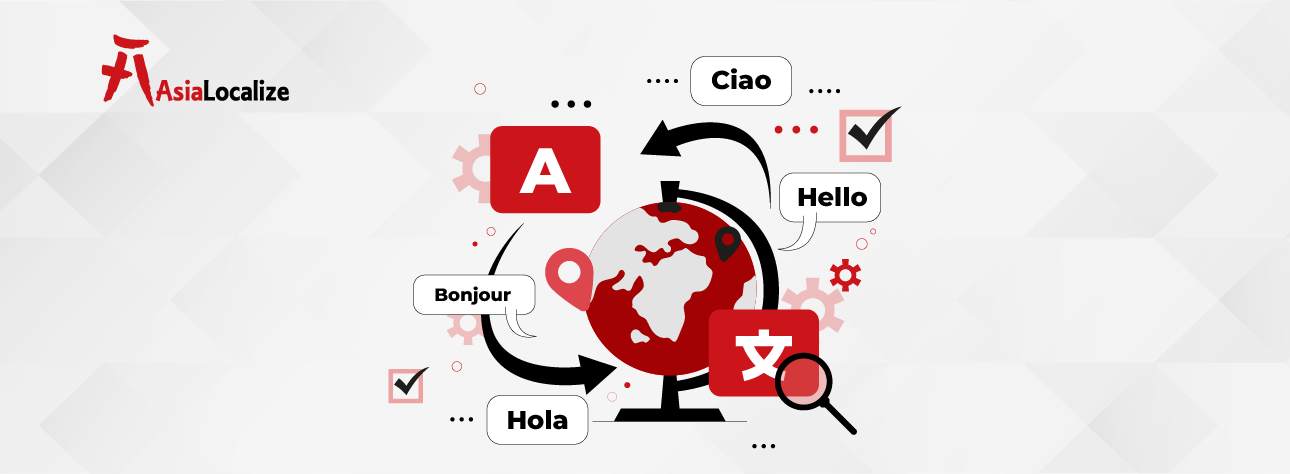In a country such as Malaysia, where multiculturalism thrives, understanding the languages of Malaysia is not just a cultural appreciation but a practical necessity for any business that has an eye on the Malaysian market.
From the Malay language, which serves as the national tongue, to various ethnic languages and dialects such as Mandarin, Tamil, and Iban, each contributes to the cultural diversity of this nation.
In this blog, we will explore the most common languages spoken in Malaysia, uncovering their nuances and how they intricately shape people’s everyday lives, thoughts, and emotions.
Official and Widely Spoken Languages
Malay – The National Language
Malay is the official language of Malaysia, serving as a unifying factor in a diverse nation. Its official and national status is established in the Constitution, ensuring it is the medium of communication in government, the education system, and public life.
Spoken by more than 80% of the population, Malay is known as Bahasa Malaysia, which means the language of Malay, or Bahasa Melayu, for the Malaysians locals.
The Malaysian language exists in various dialects that enrich its linguistic landscape. Some prominent dialects include:
- Kelantanese: Spoken in the northeastern state of Kelantan, this dialect features distinct pronunciation and vocabulary influenced by local customs and traditions.
- Terengganu: This dialect is commonly spoken in Terengganu and includes unique phonetic changes and expressions that set it apart from standard Malay.
- Sabah and Sarawak Malay: In East Malaysia, distinct versions of Malay are spoken, influenced by the local indigenous languages, leading to variations in syntax and lexicon.
English – A Lingua Franca and Language of Business
The historical influence of British colonization has significantly shaped the linguistic landscape of Malaysia, particularly regarding the widespread use of English. During the colonial period, which began in the late 18th century and lasted until the mid-20th century, the British established English as the language of administration, governance, and education.
The British introduced English-language schools, which became learning institutions for the elite and turned English into a crucial medium for higher education. Even after independence in 1957, the legacy of British colonial education persisted, and English remained integral to the education system and international business.
And even further, English has been established as the official language alongside Malay in Sarawak, a Malaysian state.
Malaysian English, commonly known as Manglish, is a unique variant of English spoken in Malaysia. Its distinct characteristics arise from a blend of influences, primarily rooted in British English, while incorporating elements from Malay, Chinese dialects (especially Cantonese and Mandarin), Tamil, and various indigenous languages.
Chinese Languages – Primarily Mandarin
In Malaysia, Mandarin is a primary medium of instruction in Chinese vernacular schools. It is taught not only as a language but also as a subject for various academic disciplines, including mathematics and science. This bilingual education system allows students to achieve proficiency in Mandarin while also learning Malay and English.
Also, Mandarin has become increasingly essential in the Malaysian business environment because of the rise of Chinese investment in Malaysia.
While Mandarin gets the lion’s share among the existing Chinese dialects in Malaysia, some Malaysians speak Hokkien, Hakka, Cantonese, Teochew, and other Chinese dialects.
Tamil – Spoken by the Indian Community
Spoken by over 1.8 million speakers in Malaysia, the Tamil language is mostly found in Peninsular Malaysia. More than 500 Tamil medium schools are found across Malaysia.
However, Tamil isn’t the only Indian language spoken in Malaysia; Bengali, Hindi, Punjabi, Malayalam, and Telugu are also used.
Indigenous Languages of Malaysia
Malaysia is home to a wide range of indigenous languages, such as Iban, Kadazandusun, Bidayuh, and Melanau. These languages often contain specific vocabulary and expressions tied to local customs, rituals, and natural surroundings.
Kazadandusuns and Iban are Malaysia’s most prominent indigenous spoken languages, particularly in Sarawak.
Many of these languages are at risk of extinction due to the dominance of more widely spoken languages like Malay and English.
Creole Languages in Malaysia
First things first, what are Creole languages? These languages are formed when speakers of different native tongues come into contact, leading to the creation of a new, stable language that typically incorporates elements from the languages involved while developing its own distinct grammatical rules and vocabulary.
In Malaysia, creole languages primarily arise from the interactions among local Malay speakers and immigrant communities, notably those from Chinese, Indian, and Portuguese backgrounds.
Some examples of Creole languages in Malaysia:
- Manglish – an informal English-based creole
- Kristand – a Portuguese-based creole widely spoken by the descendants of Portuguese settlers in Malacca
- Chavacano – Spanish-based creole
Localizing for the Malaysian Market
Language Selection
Different states and regions in Malaysia have distinct linguistic preferences and dialects. So, when venturing into the Malaysian market, it’s crucial to select the appropriate languages for your target region.
For example, in areas with a significant Chinese population, such as Sarawak, Mandarin is preferred, especially in business contexts. However, dialects like Cantonese, Hokkien, and Hakka may also be prevalent, depending on the community.
A translation company specializing in Chinese translation services would save you a lot of headaches in choosing the most appropriate dialects for the region.
Localization
Cultural insensitivity can lead to misunderstandings and even offend your Malaysian audience, which could even lead to a backlash. It’s crucial to embrace cultural sensitivity and adaptation in your business practices, especially when it comes to marketing materials, product development, and customer service content. This will not only avoid missteps but also show your respect for Malaysian culture.
AsiaLocalize: Your Success Partner In Malaysia
With the help of our skilled Malaysia-based translators, we have helped thousands of clients gain a solid foothold in the Malaysian market through our top-notch Malay translation services. And it’s your turn to have our back on your way to Malaysia.
We will customize a localization strategy that is based on your needs and your target region’s requirements, selecting the most appropriate languages and delivering the highest-quality translations in the fastest turnarounds.








